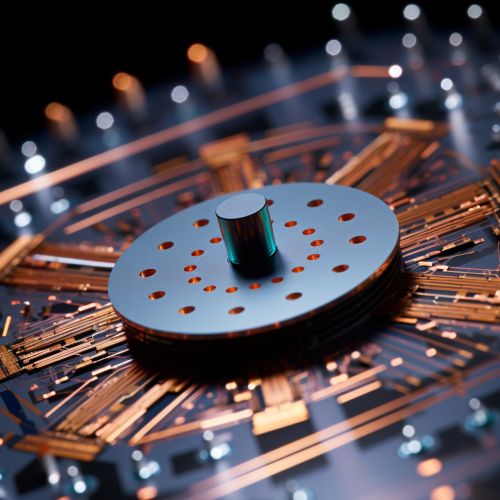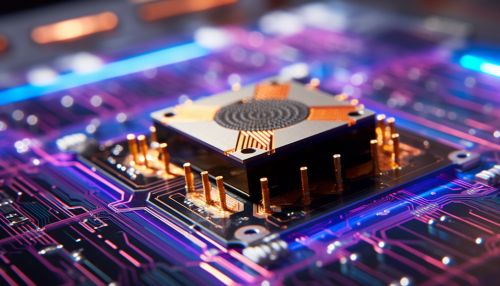Superconducting Qubit
Introduction
A superconducting qubit, or superconducting quantum bit, is a type of quantum computing device that utilizes the principles of quantum mechanics to store and manipulate information. These devices are the quantum analog of classical bits, the basic units of information in computing, and are a key component in the development of quantum computers.


Principles of Operation
Superconducting qubits operate based on the principles of quantum superposition and quantum entanglement. Quantum superposition allows a qubit to exist in multiple states simultaneously, while quantum entanglement allows qubits to be linked together, such that the state of one qubit can instantly influence the state of another, regardless of the distance between them.
Types of Superconducting Qubits
There are three main types of superconducting qubits: charge qubits, flux qubits, and phase qubits. Each type of qubit utilizes a different aspect of superconductivity to manipulate and store quantum information.
Charge Qubits
Charge qubits, also known as Cooper pair boxes, use the charge of a Cooper pair of electrons to represent quantum information. The state of a charge qubit is determined by the number of Cooper pairs that have tunneled across a Josephson junction, a type of superconducting tunnel junction.
Flux Qubits
Flux qubits, on the other hand, use the magnetic flux through a superconducting loop to represent quantum information. The state of a flux qubit is determined by the direction of current flow around the loop.
Phase Qubits
Phase qubits use the phase difference across a Josephson junction to represent quantum information. The state of a phase qubit is determined by the phase difference across the junction.
Fabrication of Superconducting Qubits
Superconducting qubits are typically fabricated using techniques similar to those used in the production of conventional semiconductor devices. The fabrication process involves the deposition of superconducting materials onto a substrate, followed by patterning and etching to create the desired structures.
Challenges and Future Directions
Despite the significant progress that has been made in the development of superconducting qubits, there are still many challenges to be overcome. One of the main challenges is the issue of quantum decoherence, which can cause qubits to lose their quantum state over time. Other challenges include improving the fidelity of quantum operations and scaling up the number of qubits in a quantum computer.
